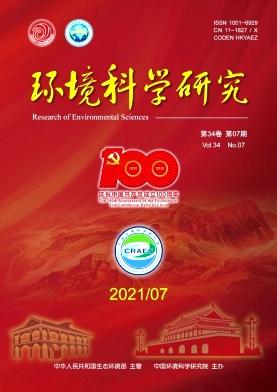Microbial Aerosol Investigation and Health Risk Assessment of Residential Area in Wuhan City
Q2 Environmental Science
引用次数: 0
Abstract
In order to investigate the distribution and risk of microbial aerosols in residential areas after the COVID-19 in Wuhan Ctiy, Changqing Garden residential area, a mature community was selected as a case in this study. From October to December 2020, the Andersen-sixstage microbial air sampler was used to collect samples in six typical places in this residential area, and the microbial aerosol concentration was determined by the plate count method. In addition, the health risk assessment was evaluated according to the Chinese Population Exposure Parameters Manual (Adult Volume). The results showed that: (1) The concentration of microbial aerosol can be ranked in this order: fresh food market >underground parking lot >food street >central basketball court >central square >green pavilion. (2) The concentration of bacteria and fungus aerosol was different in different places, and the maximum aerosol concentration occurred in the fresh food market ((1525.32±1311.31) CFU/m3) and the food street ((1296.82±113.84) CFU/m3), respectively. (3) Take the air microbial concentration in typical places as the evaluation standard: the central basketball court, green pavilion and central square were clean, the fresh food market and underground parking lot were slightly polluted, and the food court was lightly pollution. (4) The median diameter of microbial aerosols was less than 4.7 μm, which can easily cause lower respiratory tract infections in residents. (5) The Hazard Quotient (HQ) of the typical places from October to December 2020 was less than 1, indicating that the health risk of microbial aerosol exposure in Changqing Garden residential area was relatively small. This research shows that the air quality of the Changqing Garden residential area is good under the epidemic prevention and control normalized measures, which meets the requirements for sanitary conditions in the post-COVID-19 era. © 2021, Editorial Board, Research of Environmental Sciences. All right reserved.武汉市居民点微生物气溶胶调查与健康风险评价
为了解新冠肺炎疫情后武汉市常青花园住区微生物气溶胶的分布情况及其风险,本研究以成熟社区为研究对象。2020年10 - 12月,采用安徒生六级空气微生物采样器对该居住区6个典型场所进行采样,采用平板计数法测定微生物气溶胶浓度。根据《中国人群暴露参数手册(成人分册)》进行健康风险评价。结果表明:(1)微生物气溶胶浓度排序为:生鲜市场>地下停车场>美食街>中央篮球场>中央广场>绿色凉亭。(2)不同场所细菌、真菌气溶胶浓度不同,最大气溶胶浓度分别出现在生鲜市场((1525.32±1311.31)CFU/m3)和小卖街((1296.82±113.84)CFU/m3)。(3)以典型场所空气微生物浓度为评价标准:中心篮球场、绿亭、中心广场清洁,生鲜市场、地下停车场轻度污染,美食广场轻度污染。(4)微生物气溶胶中位直径小于4.7 μm,易引起居民下呼吸道感染。(5) 2020年10 - 12月典型场所的危害系数(HQ)均小于1,说明长青花园住区微生物气溶胶暴露的健康风险较小。本研究表明,在疫情防控常态化措施下,长青花园小区空气质量良好,满足后新冠时代对卫生条件的要求。©2021,《环境科学研究》编委会。版权所有。
本文章由计算机程序翻译,如有差异,请以英文原文为准。
求助全文
约1分钟内获得全文
求助全文
来源期刊

环境科学研究
Environmental Science-Environmental Science (miscellaneous)
CiteScore
3.80
自引率
0.00%
发文量
6496
期刊介绍:
 求助内容:
求助内容: 应助结果提醒方式:
应助结果提醒方式:


